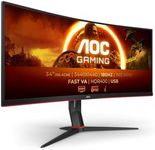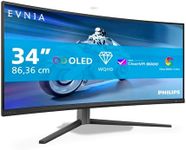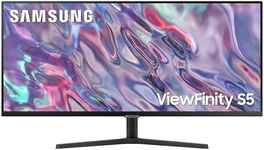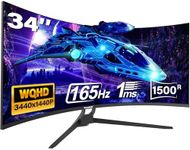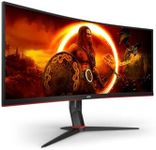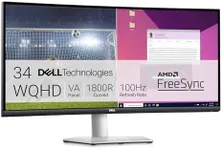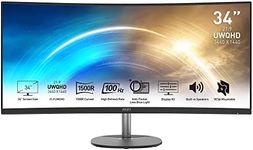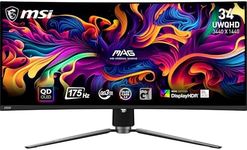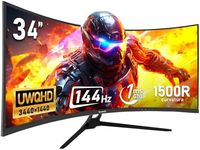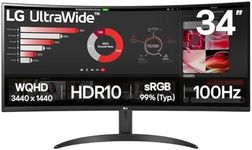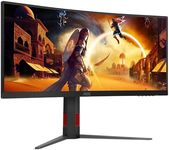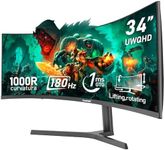Buying Guide for the Best 34 Ultrawide Curved Monitor
Choosing the right 34-inch ultrawide curved monitor can significantly enhance your computing experience, whether for work, gaming, or entertainment. These monitors offer a wide field of view and immersive experience, but selecting the right one involves understanding several key specifications. By focusing on these specs, you can find a monitor that best suits your needs and preferences.ResolutionResolution refers to the number of pixels that make up the display on the monitor, typically represented as width x height (e.g., 3440 x 1440). A higher resolution means more pixels, which generally results in a sharper and clearer image. For a 34-inch ultrawide monitor, a resolution of 3440 x 1440 (also known as WQHD) is common and provides a good balance of clarity and performance. If you need the monitor for detailed work like graphic design or video editing, a higher resolution might be beneficial. For general use or gaming, WQHD is usually sufficient.
Refresh RateThe refresh rate is the number of times the monitor updates with new information per second, measured in hertz (Hz). A higher refresh rate results in smoother motion, which is particularly important for gaming. Common refresh rates for ultrawide monitors are 60Hz, 100Hz, and 144Hz. If you're a gamer, especially into fast-paced games, a higher refresh rate like 100Hz or 144Hz can provide a smoother experience. For general productivity or media consumption, 60Hz is typically adequate.
CurvatureCurvature in monitors is measured in 'R' (radius), with common values being 1500R, 1800R, and 2300R. A lower number indicates a more pronounced curve. The curvature is designed to match the natural field of view of the human eye, providing a more immersive experience. If you want a more immersive experience, especially for gaming or watching movies, a more pronounced curve like 1500R might be preferable. For general office work, a less pronounced curve like 2300R can still offer some benefits without being too overwhelming.
Panel TypeThe panel type affects the monitor's color accuracy, viewing angles, and response time. The most common types are IPS (In-Plane Switching), VA (Vertical Alignment), and TN (Twisted Nematic). IPS panels offer the best color accuracy and viewing angles, making them ideal for creative work. VA panels provide better contrast and are good for general use and media consumption. TN panels have the fastest response times, which can be beneficial for competitive gaming, but they often have poorer color reproduction and viewing angles.
ConnectivityConnectivity options determine how you can connect your monitor to your computer and other devices. Common ports include HDMI, DisplayPort, USB-C, and sometimes Thunderbolt. More connectivity options provide greater flexibility. If you plan to connect multiple devices or need to daisy-chain monitors, look for a monitor with multiple ports. USB-C and Thunderbolt are particularly useful for modern laptops and can also provide power delivery.
AdjustabilityAdjustability refers to the ability to change the monitor's height, tilt, and swivel. This is important for ergonomic reasons, allowing you to position the monitor for comfortable viewing. If you spend long hours in front of the screen, look for a monitor with good adjustability options to reduce strain on your neck and eyes. Some monitors also offer VESA mount compatibility, which can be useful if you want to use a monitor arm.
